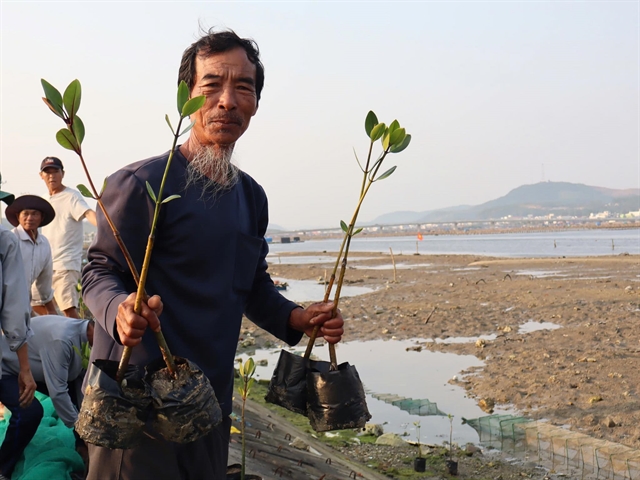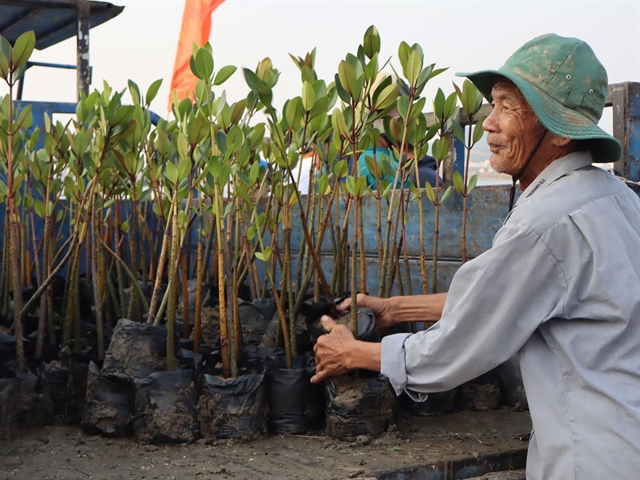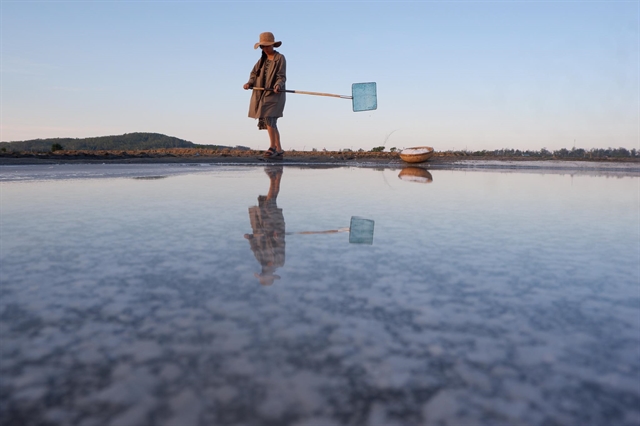 Life & Style
Life & Style


|
| A farmer in Phổ Thạnh ward carries mangrove to help restore the wetland ecological system in Sa Huỳnh, 60km south of Quảng Ngãi City. Photo courtesy of Phạm Hồng Thắm |
ĐỨC PHỔ – More than 1,000 mangrove trees have been planted by local farmers in Phổ Thạnh Ward in the central Quảng Ngãi Province as part of pilot wetland afforestation and community-based development, with funding from the United Nations Development Programme and the GEF small grants programme (UNDP/GEF-SGP).
The mangrove restoration is part of a revival of the local ecological system, to protect the environment for coastal seafood and maintain the well-known heritage Sa Huỳnh salt fields.
The project has helped the community with technical assistance in community-based tourism related to Sa Huỳnh culture (which dates back to 2,500 to 3,000 years ago), with boosting waste sorting at source and non-chemical salt making.
A report from UNDP/GEF-SGP showed how the unique wetland ecosystem of the Sa Huỳnh fields provides a valuable source of salt and also supports the local environment and gives livelihoods to the local community.
The salt fields provide safe shelter for birds, fish, shrimp, crabs and aquatic plants, to the benefit of both the environment and the community.
Phạm Hồng Thắm, a member of the local traditional organic salt making community said the programme has also included a number of other environmental protection activities, including education pushes, clean-ups and used battery collections.

|
| Saplings are used in the replanting of the wetland mangrove forest in Sa Huỳnh. Photo courtesy of Phạm Hồng Thắm |
She said the mangrove planting, carried out by the Phổ Thạnh farmers’ association between 2024-25, would help raise awareness of local community on the importance of the wetland ecological system.
The Sa Huỳnh salt area, which covers 29.73sq.km is home to a total population of 25,608 and supports 550 households.
It is a destination for community-based tourism, craft tour services, alongside environmental and traditional cultural research by universities.

|
| A view onto the Sa Huỳnh salt fields of Phổ Thạnh Ward of Quảng Ngãi Province. The site is one of the most visited by tourists. Photo courtesy of SAHU |
Local farmers have been building organic salt as an OCOP (One Commune One Product), aiming for it to become a sustainable tourism brand and a high-value local product.
The Sa Huỳnh salt eco tour and the Gò Cỏ Village eco tour are the first of two community-based tourism services in Phổ Thạnh Commune. VNS




